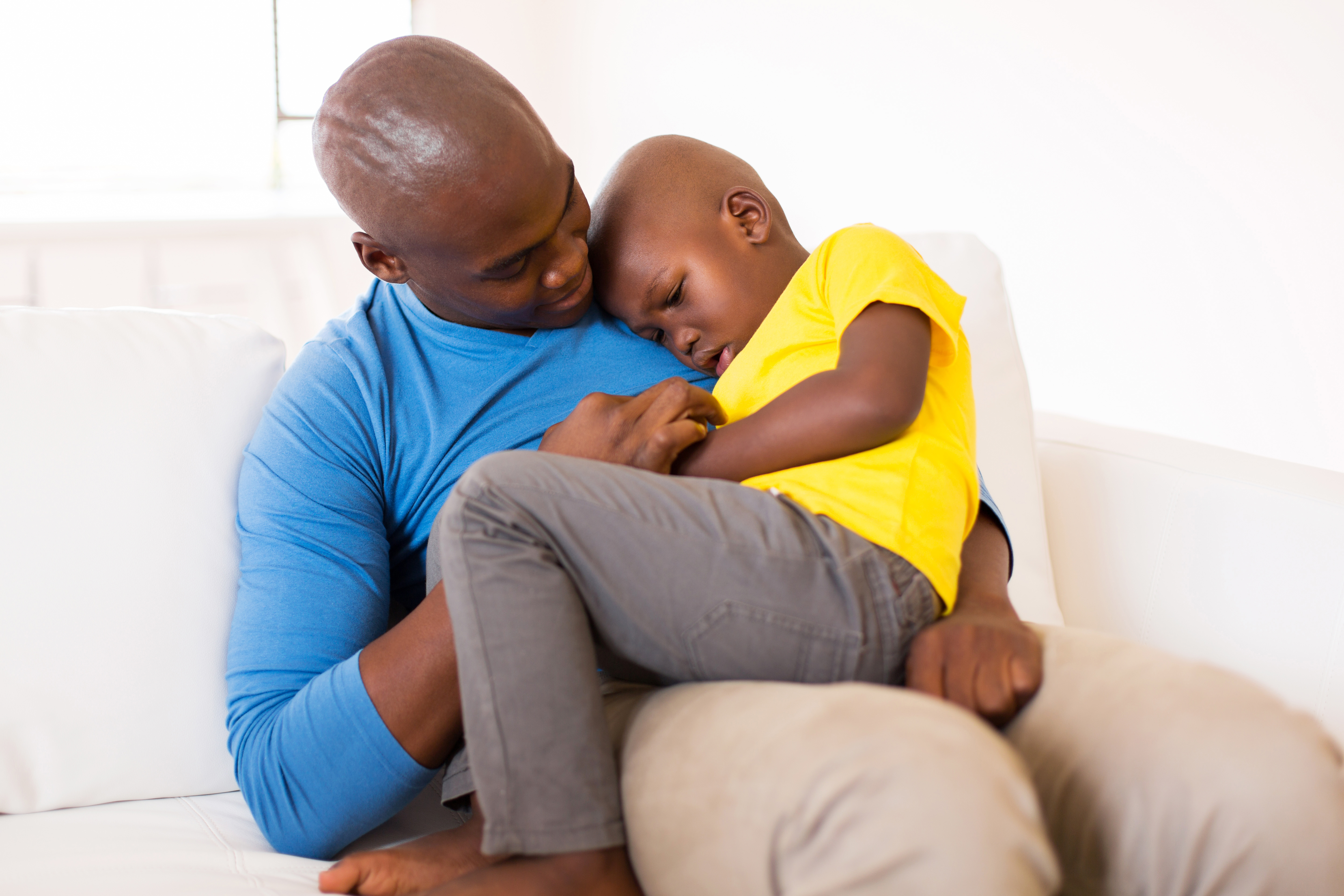7 year old with nighttime anxiety is afraid of the dark and going to sleep at bedtime.
read •

My 7 year old is afraid of the dark and of going to sleep. I have tried a million different things, but no one is getting any sleep and we both usually end up in tears, or me mad. Do we need to see a doctor? Its been months and it just seems to be getting worse.
Dear Dawn,
It's a frustrating situation to have a child who should be old enough to go quietly to bed but won't, at exactly the time of day when you most need some downtime to recharge your batteries. I need to add, though, that this is very common. Many seven year olds are not quite comfortable falling asleep in the dark by themselves, especially if their room seems (to them) far from where their parents are at that moment. Shaming your child or admonishing him or her to be more brave will be counter-productive and ineffective. He needs your help to learn to put himself to sleep.
Since you say that "It has been months" I am assuming that this nighttime anxiety began out of nowhere, and that your child was once able to go to bed at night more or less without fear. If that is indeed the case, the first thing to do is to make sure that there is no trauma that triggered your child's nighttime anxiety. Did you go out of town and leave her? Was someone in your family ill? If you can figure out when the sleep anxiety began,you might be closer to a solution.
If your child has always had difficulty falling asleep, then you are not alone. It is actually much more common than you'd think for a 7 year old to be afraid of the dark and to need help falling asleep. I don't think you need a psychologist. Your child is old enough now to learn to go to sleep without adult help. But you do need to realize that this will be a learning process for your child, and that until this learning takes place your child simply can't feel secure enough to fall asleep without your presence. The optimal situation here is for you to commit to helping your child learn this skill that all kids need, just as you have helped him or her learn other skills, with the awareness that the whole process might take a few months.
Here's how:
1. Recognize that while your child is old enough to learn to fall asleep on her own, she doesn't know how yet. To learn, she needs to feel secure at night. To begin with, that means she needs you to be close to her as she falls asleep.
2. Begin by talking with your child to create a foundation of security that he can relax into at night. Explain that he does need to learn to fall asleep by himself, but that you will help him to learn, and will not leave him alone in the dark before he is ready. Empathize with him: "I know sometimes the dark feels scary to you. Even when I am not with you, I will make sure you feel safe. And you know that I will always be there if you need me."
3. Take your son shopping for a big stuffed animal that he can cuddle with, to eventually take the place of your body. Tell him this animal will protect him at night.
4. Buy yourself a few books you can't wait to read.
5. Create a peaceful evening routine that ends with a half hour in bed with you reading to him and snuggling.
6. After reading together, at "lights out" time (which should be at least half an hour before you expect your child to fall asleep), turn out most of the lights in the room. However, make sure there is a light near the bed that is under your child's control. Leave that light on dimly so your child is not frightened of the dark. Tell your child that if he's afraid at any time during the night, he can turn his light on, and he can call you and you will always come.
7. After lights out, hug your child and tell him something you "appreciate" about him -- how he was so helpful today, or worked so hard at something. Tell him how glad you are that you got lucky enough to be his mom.
8. Turn on the same music every single night. It should be accessible to your child so that she can turn it on herself if she wants. It should of course turn off by itself. An hour-long tape is ideal. Eventually just hearing this tape will make your child start yawning. (You may have to try a few tapes to find one that is boring enough!)
9. Tuck him in with his animal "friend" and tell him that you will stay in his room until he falls asleep. In the beginning, sit next to the bed with your hand on him while you read a book. (Use a flashlight, or a very targeted headlamp.) If he tosses and turns and has a hard time falling asleep, reassure him that he can relax, you will always be there if he needs you. If he pleads for a story, just say that it is bedtime and time to sleep now. Tell him in a boring voice that everyone and everything is sleeping, reciting a long list ("The trees are sleeping, the animals are sleeping....") He may seem to be too old for this now, but he will find it reassuring to be treated as younger than he is at this moment, because in fact he feels younger than he is.
10. Once she begins falling asleep fairly quickly with you touching her, transition so that you are still sitting right next to her, but not touching her while she falls asleep. Give her lots of hugs and kisses, and maybe something of yours to hold (a scarf?) and tuck her and her animal in. If she wants to touch you, let her do so and then tell her that she needs to learn to go to sleep herself, and you will stay with her but not touch her. (If she backslides occasionally and needs to touch you because she is too wound-up to fall asleep, it's no big deal. Just make sure that most nights she's going to sleep herself.)
11. Start moving your chair away from him. If you've gone through you books, start doing your paperwork, email, laundry folding, whatever. It helps to move just a little each night, and to stay very calmly in your chair so he isn't afraid you'll leave.
12. Eventually, your chair should be in the open doorway as you do your paperwork.
13. At each stage, give her lots of praise for progress in the right direction: "I noticed you fell asleep so quickly last night. I am so proud of how you're learning how to be in charge of your own sleep."
14. Eventually, your chair should be just outside the open door as you do your paperwork.
15. Start telling her that you have to check the laundry and will be back in five minutes. Talk with her about how to calm herself down if she gets scared while you're gone, such as humming along to her tape. Do that regularly, leaving your chair in the doorway. (I am assuming that you are leaving the door open because your child is still nervous about the dark.) Really do go back in five minutes and sit for five minutes.
16. Finally, tell him ''I need to go make a phone call that is very urgent. I promise I will come back in 5 minutes to check on you.'' Leave your chair in the doorway as a sentinel. In no more than 5 minutes come back and say ''How are you doing?'' and touch his head and say ''I'll be back in another 5 minutes.'' If he resists your leaving, tell him that if he gets scared, he can call for you and you will come right away no matter what (and then make sure you do).
This process can take a few months. It can also take just a couple of weeks. You'll need to find a balance between moving the process constantly forward, and not pushing too fast, which will end up scaring your child and setting the whole process back.
I promise you that at the end of this time your child will be falling asleep alone, will not be traumatized, and will feel confident and secure. There
will be no tears or anger during the process. You will have strengthened, rather than damaged, your relationship with your child. You will have your
evenings back. And you'll have read several good books and lowered your own stress level!
Dr. Laura
Click here to watch Dr. Laura's video, "Helping Children With Childhood Fears."




